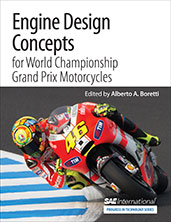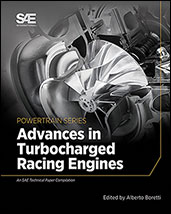Technical Paper
Turbo/Supercharged Two/Four Stroke Engines with One Intake and One Exhaust Horizontal Rotary Valve per Cylinder and Central Direct Injection and Ignition
2015-01-14
2015-26-0031
The present paper is an introduction to a novel rotary valve engine design addressing the major downfalls of past rotary valves applications while permitting the typical advantages of the rotary valves. Advantages of the solution are the nearly optimal gas exchange, mixture formation, ignition and combustion evolution thanks to the large gas exchange areas from the two horizontal valves per engine cylinder, the good shape of the combustion chamber, the opportunity to place a direct fuel injector and a spark or jet ignition device at the centre of the chamber. The novel engine design also permits higher speed of rotation not having reciprocating poppet valves and the reduced friction losses of the rotating only distribution. This translates in better volumetric efficiencies, combustion rates and brake mean effective pressures for improved power density and fuel efficiency. Additional advantages are the reduced weight and the better packaging.




